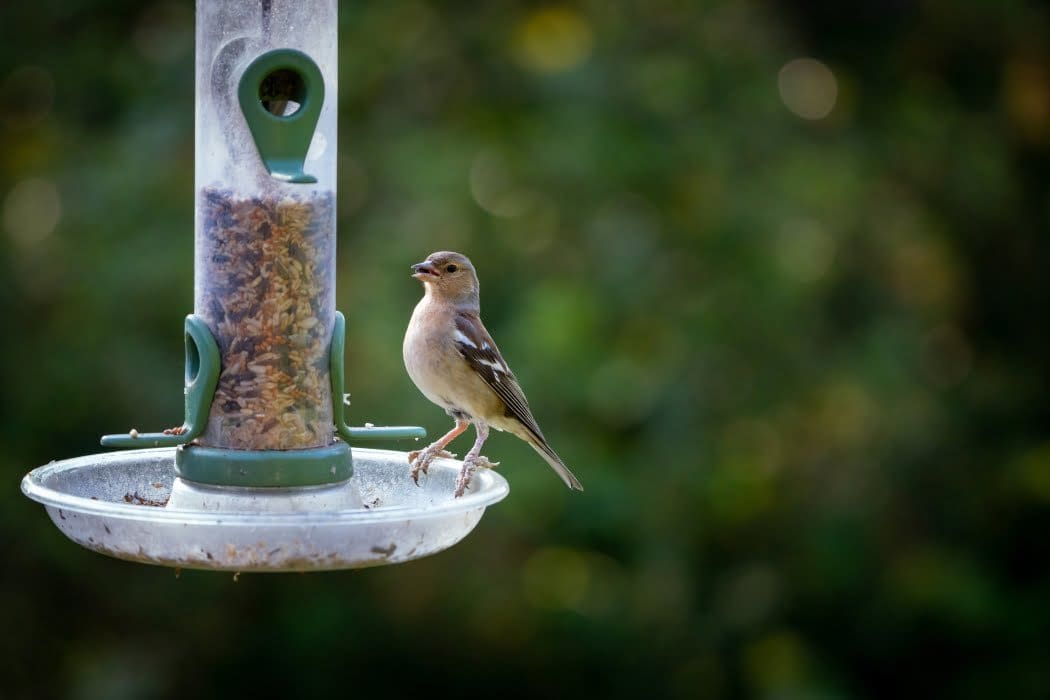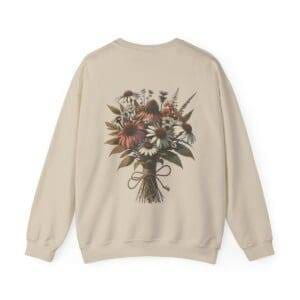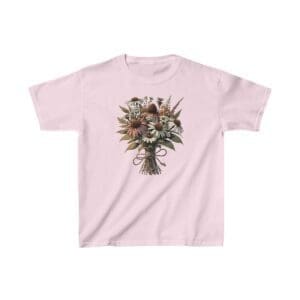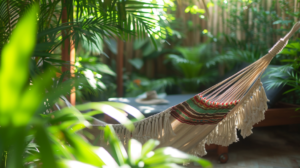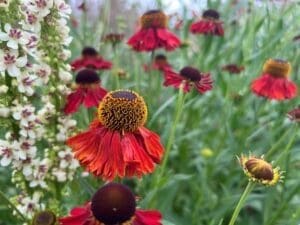Creating a wild garden is one of the most rewarding ways to connect with nature and support biodiversity. By using native plants and embracing a more natural design, you can transform your outdoor space into a mini nature reserve that provides food, shelter and interest for wildlife.
In this comprehensive guide, we’ll share everything you need to know to create your own wild paradise, from design and key features to plant recommendations.
This post contains affiliate links which means we may make commission from any qualifying sales with no extra cost to yourself.
How to Create a Wild Garden?
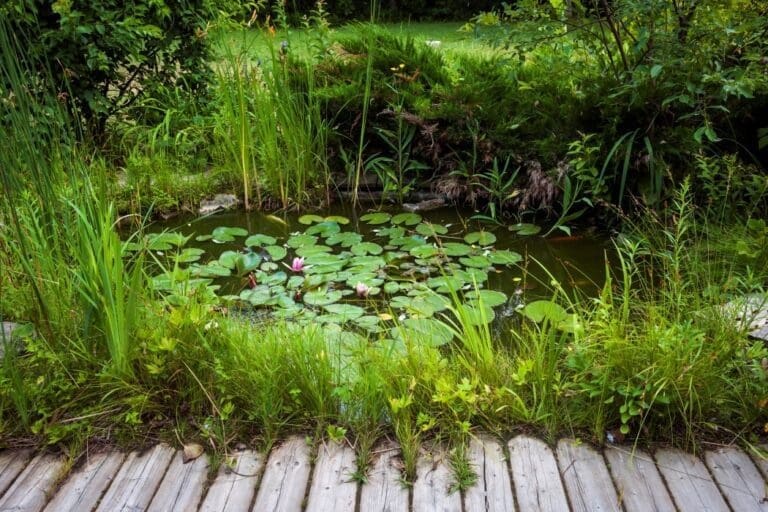
A wild garden embraces a more relaxed, naturalistic style than a traditional formal garden. The overall look is meant to mimic nature, with plants arranged in a pleasing but informal way.
The main aims of a wild garden are to:
- Promote biodiversity by providing habitat for wildlife
- Use native plants that are naturally adapted to the local environment
- Embrace a more relaxed, natural design with curved lines and irregular shapes
- Provide year-round interest with different seasons of flowering and foliage
Unlike a traditional flower border, a wild garden has a more informal flowing design. Plants are allowed to self-seed and spread to create a softer, natural effect. Less traditional ornamental varieties are avoided in favour of native species.
Key Features of a Wild Garden
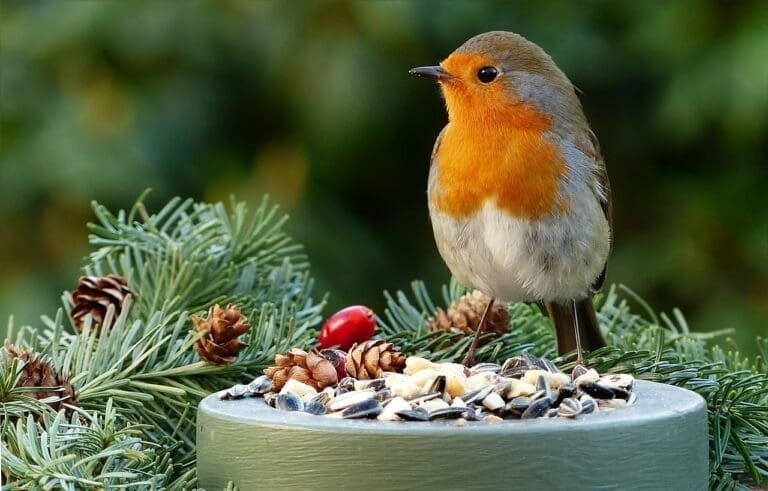

There are several key features which help create the wild, naturalistic look:
Curving Beds and Paths
Beds and pathways have soft, curving lines rather than formal straight lines and right angles. This helps the garden to flow in a natural looking way.
Asymmetrical Design
Rather than everything being neatly balanced and symmetrical, a wild garden has an informal design with beds and plants arranged in an asymmetrical way.
Varied Heights and Textures
Choose a mix of plants with diverse heights, forms and foliage textures. This complexity helps mimic a natural environment.
Native Plants
Using plants native to your local region is a must for attracting wildlife. They will be perfectly adapted to local conditions.
Year-Round Interest
Plan for interest across the seasons with plants for spring flowers, summer foliage and winter structure. This ensures something is happening all year.
Structural Elements
Informal structural features like paths, pergolas, seating and water features help add interest and navigation.
Wildlife Habitats
Provide key habitats like ponds, log piles, long grass and bird feeders to help attract wildlife.
How to Design a Wild Garden


When designing your wild garden, keep these key principles in mind:
Choose a Naturalistic Layout
Avoid straight lines and formal patterns. Instead opt for curved, flowing shapes both for beds and pathways. This will create a relaxed, natural look.
Vary Heights and Textures
For visual interest and biodiversity, include a mix of heights from groundcovers to tall perennials and shrubs. Play with diverse foliage forms and textures too.
Repeat Plants for Unity
While embracing variety, allow some plants to self-seed and repeat down beds. This creates a unified, naturalistic effect.
Use Focal Points Wisely
Use striking plants, seating areas, water features or sculpture judiciously as focal points to help draw the eye around the space.
Hide Boundaries
Use trees, shrubs or mounding perennials to hide the edges and make the garden appear boundless. Curving beds also help disguise boundaries.
Key Elements to Include in your Wild Garden
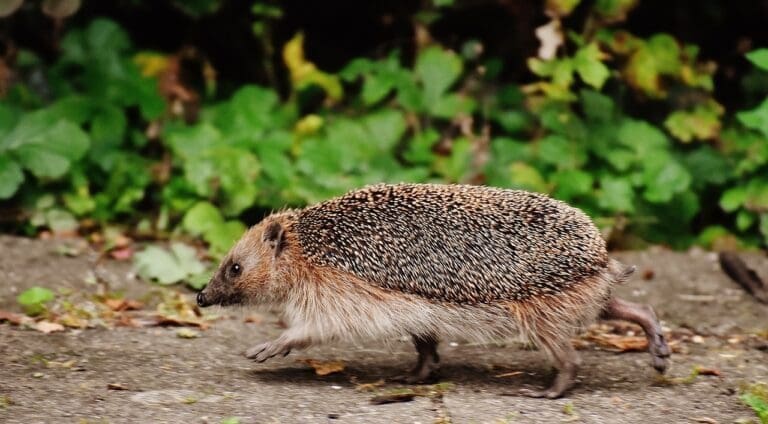

There are several elements which will help enhance wildlife, interest and the overall naturalistic effect:
Wildlife Ponds
Ponds provide drinking and bathing spots for wildlife as well as valuable habitat for aquatic plants, insects and amphibians. Position it where you can enjoy the sound of trickling water.
Log Piles
A log pile offers shelter for insects and hedgehogs as well as a feeding spot for beetles. Choose a shady, undisturbed corner.
Trees and Shrubs
Structural planting like trees and shrubs offers shelter and food to birds and pollinators. Go for native varieties like rowan and hawthorn.
Long Grass Areas
Allow some areas to grow longer with seed heads left over winter. This provides habitat for insects and small mammals.
Bird and Bat Boxes
Providing roosting spots will encourage birds and bats to take up residence. Site them on mature trees or sheds.
Bug Hotels
Made from hollow stems, logs and crates, these offer nooks and crannies for solitary bees and other beneficial insects.
Nesting Material
Leave out pet fur, moss and hair for birds to use as lining for their nests. Robins in particular will appreciate this.
Feeding Stations
Draw in birds, squirrels and hedgehogs by providing suitable food like nuts, seeds and mealworms.
Seating Areas
Quiet benches tucked into secluded corners are the perfect spot for you to sit and enjoy watching the wildlife.
Wild Garden - Plant Recommendations
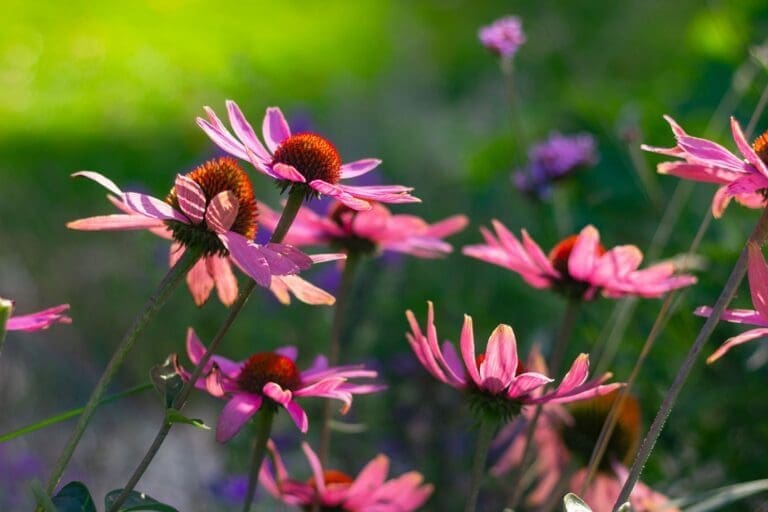

Choosing the right plants is key to attracting wildlife and creating your wild garden. Follow this advice:
- Favour native species as these will be perfectly adapted to local conditions and support more wildlife.
- Select perennials like coneflowers, achillea and geraniums for reliable yearly interest.
- Include evergreen shrubs and hedging like holly, laurel and box for winter structure.
- Add climbers like honeysuckle and clematis over pergolas for vertical interest.
- Plant spring bulbs like crocus, daffodils and bluebells for an early colour display.
- Trees and shrubs with berries and seeds provide vital food sources for birds.
- Herbaceous plants with seed heads left over winter offer shelter and food.
- Night-scented flowers will attract pollinating moths and bats.
Some great native plants to try include:
- Perennials: Foxglove, oxeye daisy, achillea, geranium, coneflower.
- Shrubs: Hawthorn, hazel, dog rose, spindle, willow.
- Climbers: Honeysuckle, clematis, ivy, dog rose.
- Bulbs: Crocus, snowdrop, daffodil, bluebell.
- Trees: Oak, rowan, silver birch, alder, crab apple.
For more inspiration, refer to our list of 10 of the Best Perennials for your Naturalistic Garden.
Provide Year-Round Interest


One of the keys to a successful wild garden is to have something happening during every season:
Spring
Spring bulbs, flowering trees and blossoming perennials like pulmonaria provide the first bursts of color.
Summer
The long daylight hours of summer see many herbaceous perennials like achillea and geranium hitting their peak.
Autumn
As other plants fade, rudbeckia, sedum and ornamental grasses come into their own in autumn.
Winter
Evergreen shrubs, trees with structure and seed heads left for wildlife provide interest in winter.
Create Mini Habitats
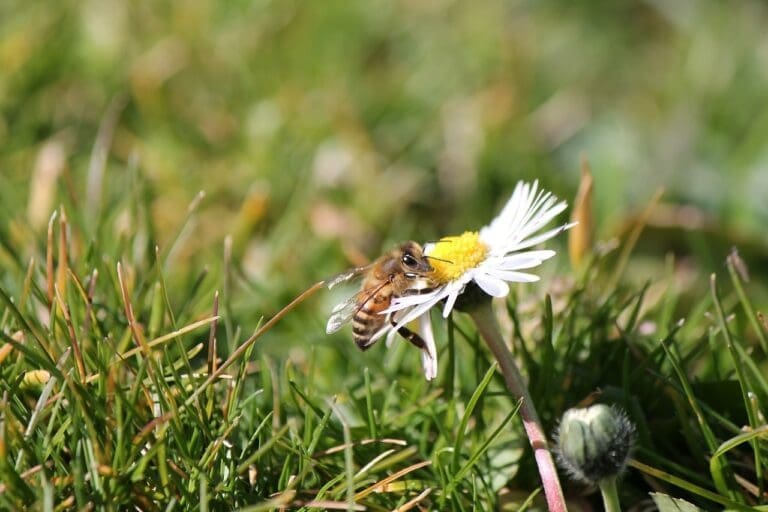

Dotting your wild garden with various microhabitats tailored to different species will increase biodiversity. Consider adding:
- Wood piles for insects and hedgehogs.
- Bird boxes mounted on trees.
- Log edge pond for dragonflies and frogs.
- Rockeries for reptiles and solitary bees.
- Areas of long grass for small mammals.
- Native hedgerows with mixed wildlife-friendly species.
- Bug hotels made from drilled logs or bamboo.
- A stand of bee-friendly flowers.
Even small features like this can make a big difference by providing food, shelter and breeding spots. For more ideas see our guide on 6 Ways to Attract Wildlife to your Garden.
Embrace the Messy Beauty of a Wild Garden


A key mindset shift when creating a wild garden is to embrace a touch of messiness. Avoid being too neat and tidy. Allow plants to self-seed and wander outside their beds to imitate nature. Highlights include:
Self-Seeding Plants
Allow some plants like poppies and foxgloves to happily self-seed in gaps. This creates a naturalistic effect.
Transient Perennials
Rather than permanently staking out defined spots, let some plants gradually spread or recede naturally each year.
Leave Seed Heads
Resist deadheading everything and leave some spent flower heads over winter. They offer visual interest and food for birds.
Relaxed Edging
Avoid razor sharp edges. Allow low plants to gently soften and spill over the boundaries of beds.
Long Grass
Let the grass and seed heads grow longer in low traffic areas. This offers shelter for insects.
Moss and Leaf Litter
Allow moss and leaves to accumulate in corners. This supports insect and fungal life and adds to the wild look.
Caring for your Wild Garden


While wild gardens require less work than formal displays, some care and maintenance is still required:
- Weed and mulch beds annually to suppress unwanted species.
- Prune overgrown plants like shrubs in late winter.
- Support tall perennials with unobtrusive pea sticks or hoops.
- Divide congested clumps of perennials in autumn or spring.
- Leave seed heads over winter for visual interest and wildlife value.
- Top up gravel paths and timber edging when required.
- Clean out water features and add aquatic plants like lillies.
- Repair and refresh elements like bird boxes as needed.
Set aside time for regular observation and enjoy watching your miniature ecosystem thrive!
Embracing the Rewilding Movement
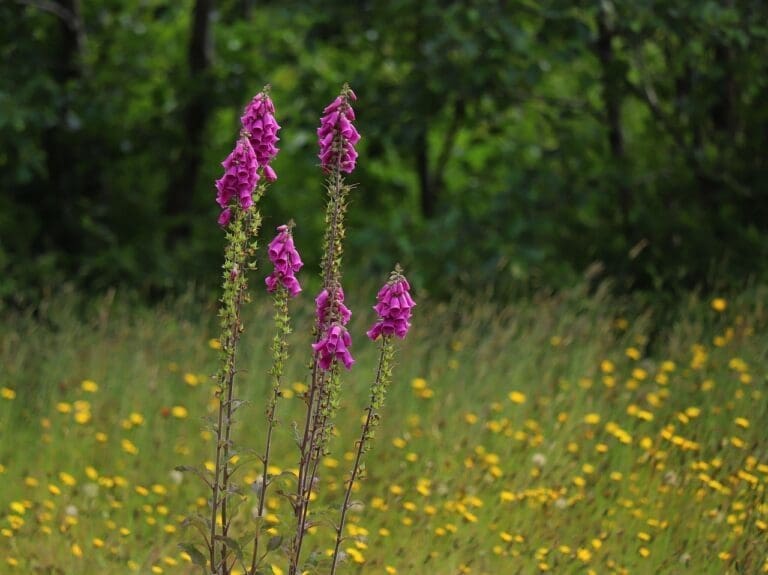

Creating a wild garden ties in with the growing Rewilding Movement which seeks to restore natural processes and lost biodiversity in the landscape.
Key principles of rewilding include:
- Restoring degraded ecosystems
- Reintroducing native plants and animals
- Removing man-made barriers and structures
- Promoting self-sustaining biodiverse landscapes
While you may not be able to rewild on such a grand scale, anyone can apply these principles in their own garden by taking a wilder approach. So get planting those native wildflowers and let your lawn grow long this summer!
Our article on What is a Naturalistic Style Garden? has more useful information on embracing this wild gardening approach.
Final thoughts
Creating a wild garden offers huge rewards in terms of increased biodiversity and a closer connection with nature. By using native plants, providing habitat and taking a naturalistic approach to design, you can attract beautiful wildlife from hedgehogs to butterflies.
The enjoyment comes not just from the plants themselves but also from sitting back and observing nature take place around you. Follow the guidance in this article to design, plant and care for your own wild paradise.
For more garden inspiration, check out the rest of our blog for tips on everything from Drought Tolerant Planting to Gardening with Children. Plus browse our seasonal Planting Guides for the best species to add right now.

